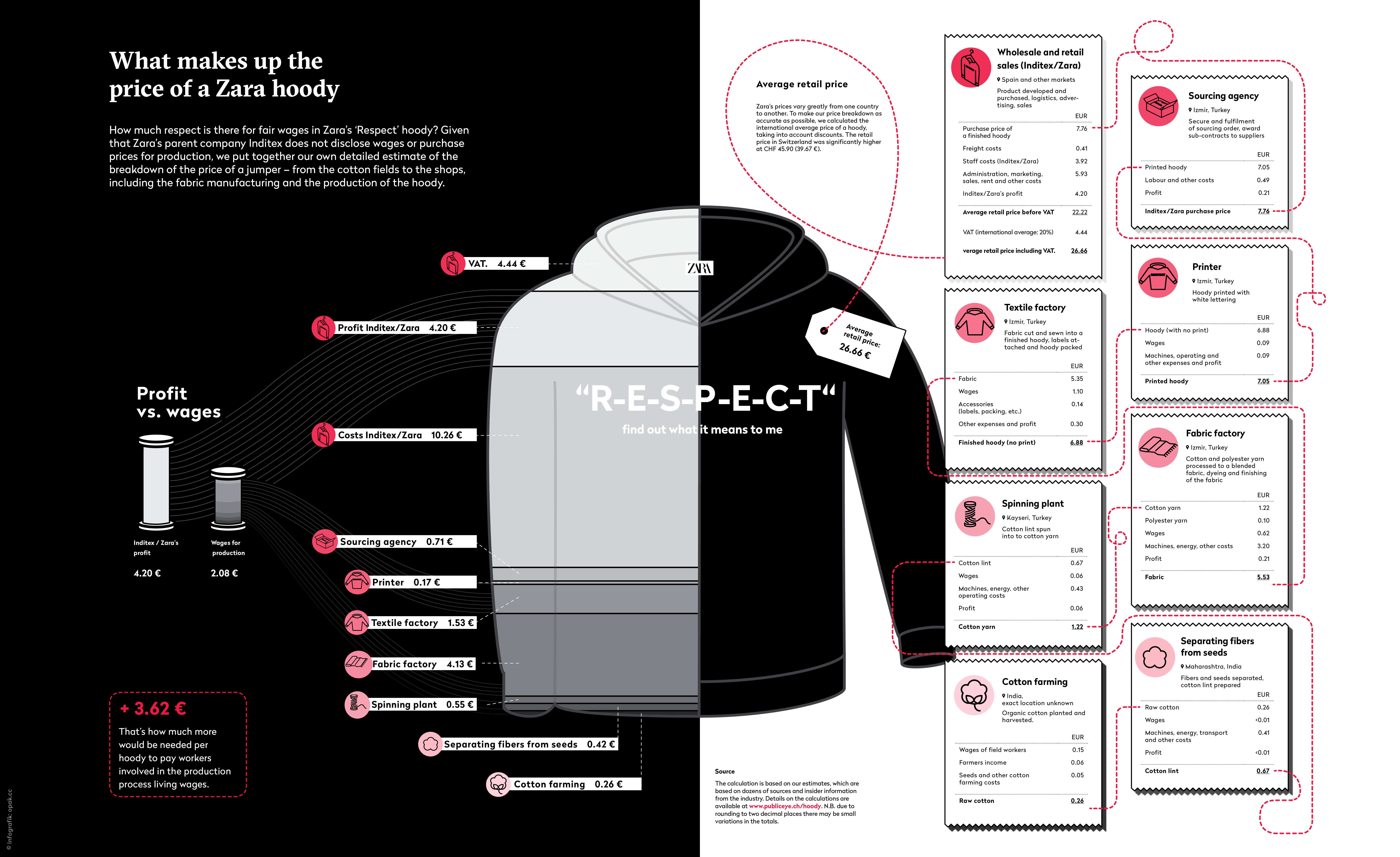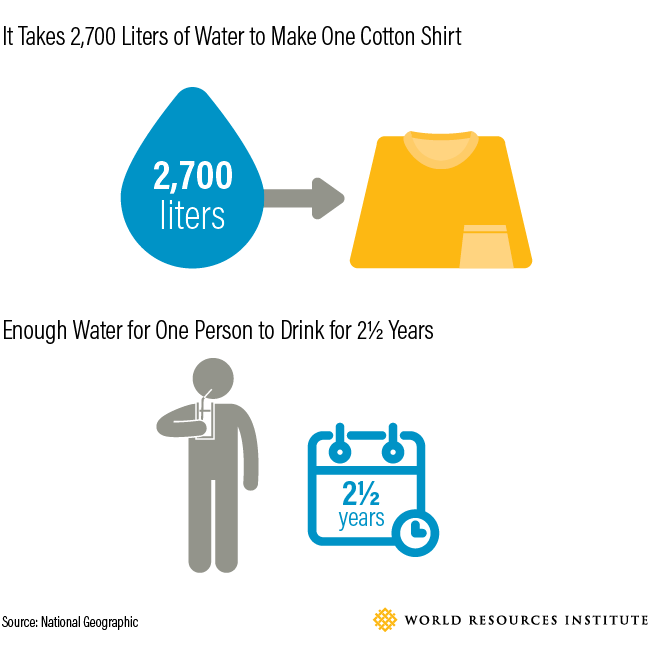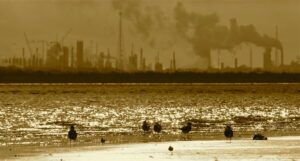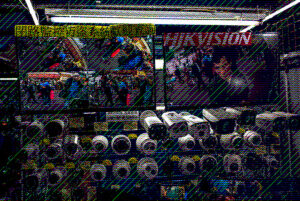What The Fact?
Myeongdong by Emily Orpin. Photo adapted via Flickr (used under CC BY-NC 2.0)
Fast fashion has democratised access to fashion trends and made them affordable at cheaper prices. But does the impact and cost on workers, the environment and on supply chain transparency make this industry tenable? Colm Regan reviews the evidence.
The Claim
Fashion across the globe is big business – a business that impacts directly and indirectly on all our lives. It has major environmental, human rights, waste, and health impacts.
Fashion is a truly global industry that links people everywhere and is now the basis for a major public conversation and debate around the question of sustainability.
Fashion educator and author Sass Brown questions the underlying basis of the fast fashion industry in her book Eco Fashion, claiming:
‘Cheap fashion is really far from that, it may be cheap in terms of the financial cost, but very expensive when it comes to the environment and the cost of human life.’
The debate pivots around two key issues – the impact of the fashion industry on garment and related trades workers and on the planet.
As a result, in March 2020, the UN launched the Alliance for Sustainable Fashion which seeks to raise awareness of the issues and to encourage industry and consumer change.
The Verdict

The claim is rated true and is accurate based on the best evidence publicly available at this time.
The evidence from a wide range of sources and perspectives (researchers, the UN, the International Labour Organisation, NGOs and trade unions) makes it clear that far from being cheap, fast fashion is very expensive in terms of its human and environmental costs.
The Evidence
What is 'Fast Fashion'?
The term ‘fast fashion’ is used to describe low-priced yet ‘stylish’ clothing that moves quickly from design stage to production and retail stores with new collections being introduced continuously, even weekly.
This business model is profitable for manufacturers and retailers as the constant introduction of new products encourages customers to frequent shops more often, which means they end up making more purchases. It also democratises fashion trends that everyone can access – not just the rich and famous.
Zara’s mission statement, one of the most well known fast fashion brands, is to:
“give customers what they want, and get it to them faster than anyone else.”
Primark’s mission statement (another well known discount fashion retailer) proclaims:
Primark mission and vision focus on providing people with a top-notch product, also keeping in mind the latest style, fashion, and price. It is quite apparent that the company is assuming cost to be their leader and committing themselves to provide top-quality products at the best price.
Innovations in supply chain management among retailers make fast fashion possible. Zara and H&M are two giants in the fast fashion field. Fast fashion has proven to be a highly profitable business model based on reproducing ‘catwalk’ trends and high fashion, mass-producing them at low cost.
The term was first used by the New York Times in describing the model developed by Zara brand founder Amancia Ortega in which ‘it would only take 15 days for a garment to go from a designer’s brain to being sold on the racks”.
Introducing the 'costs' as well as the 'price' of fast fashion
More recently the term Fast Fashion has become synonymous with debates about the real cost of fashion and its impact on people and planet.
A research partnership between Public Eye, Schone Kleren Campagne and the Collectif Éthique sur l’étiquette within the Clean Clothes Campaign network, and the Paris-based research group Le Basic, investigated the what makes up the price of a Zara hoodie that costs €26.66, finding:
the biggest chunk of the hoodie’s retail price – an estimated €10.26 – went back into Zara, to cover retail space and staff wages. The next biggest slice, after VAT at €4.44, was profit for Inditex/Zara, at €4.20. Their research suggested that the textile factory in Izmir received just €1.53 for cutting the material, sewing, packing and attaching the labels, with €1.10 of that being paid to the garment workers for the 30-minute job of putting the hoodie together.
The report concluded that workers could not have received anything like a living wage, which the Clean Clothes Campaign defined, at the time the report was released in late 2019, as a gross hourly wage of €6.19.
Vanishingly few retailers guarantee living wages across their vast, complex supply chains. According to the not-for-profit group Fashion Revolution, only two of the world’s 250 largest fashion brands (OVS and Patagonia) disclose how many of their workers are paid a living wage – despite the kind of resources that make billionaires of founders.
High-street clothing has been getting cheaper and cheaper for decades. A major reason why, according to Gordon Renouf, the CEO of the fashion ethics comparison app Good on You, is that so many western brands have “moved from onshore production 40 years ago to larger offshore production”. Often, the countries they have chosen have “much lower wage costs, weaker labour movements and laxer environmental regulations”. Of course, we know all this, but we have also become accustomed to reaping the benefits. Our perception of what clothing should cost – and how much of it we need – has shifted.
According to the UN, the average consumer buys 60% more pieces of clothing – with half the lifespan – than they did 15 years ago.
Even among brands that have launched with sustainability as their USP, greenwashing is rife. Renouf warns against those that talk vaguely about being “natural” and “fair”, or bang on about recycled packaging, without giving details about, say, the materials they use or whether they engage with unions in their factories.
Many companies have spent decades promoting their CSR credentials. Zara’s parent company Inditex has been participating in the Ethical Trade Initiative since 2007 and 13 years ago proclaimed its progress on workers rights and working conditions in a 2010 annual report:
“Long before the signature of the international framework agreement by the International Textile, Garment and Leather Workers’ Federation (ITGLWF) and Inditex in 2007, the Group had already promoted, in close collaboration with the local union organizations, the development of the human and workplace rights in different geographical scenarios where Inditex carried on its production activities. the signature of the international framework agreement showed that it was possible to overcome the old paradigms on which labour relations were based and confirmed that, only from the moment of joint action with the parties involved, it was possible to promote proper working conditions in the production chain.”
The reality of high-street clothes shopping is still very far from this ideal of sustainable fashion. Apart from a few “sustainable” lines produced by the big fast-fashion brands, it is almost impossible to find new, ethical clothing at rock-bottom prices, because the business models that have enabled clothing to get this cheap rely on inexpensive, environmentally damaging fabrics and very low wages.
The organisation ‘Good on You’ aims to provide ratings for as many brands as possible, “rather than simply promoting the most sustainable brands”. You could, for example, move from an ultra-rapid fashion brand to a more engaged high-street fast-fashion brand, which might not cost much more, but still could constitute progress.
One of the realities of the impact of fast fashion was highlighted in November 2021 with the publication of an Agence France-Presse (AFP) report on the mountains of discarded clothing dumped in Chile’s Atacama Desert. It is estimated that:
- about 59,000 tons of second-hand clothes arrive in Chile for resale each year from Europe, the US and Asia.
- However, an estimated 39,000 tons is unable to be sold and ends up dumped in the desert.
- The over-consumption of new clothing means that even an increasingly vibrant second-hand clothing market cannot keep up. While second-hand markets can play a major role in reducing the carbon impact of clothing, a system where clothes are around the world multiple times, only to be wasted anyway is not sustainable.
Simply stated, the overwhelming research evidence from a wide range of sources and international bodies such as the World Economic Forum, the UN Fashion Alliance, the International Labour Organisation, Ethical Consumer and the Clean Clothes Campaign is that fast and cheap fashion is just not sustainable or fair.
In summarising the research, three core issues stand out.
1. Cheap or Fast Fashion promotes damaging labour trends and behaviours in the fast fashion sector
The Rana Plaza disaster in Bangladesh in 2013 killed at least 1,132 garment industry workers and highlighted the brutal working conditions some workers experience.
A 2018 U.S. Department of Labor report found evidence of both forced and child labour in the fashion industry in Argentina, Bangladesh, Brazil, China, India, Indonesia, Philippines, Turkey, Vietnam and other countries.
The UN estimates that about 80% of fashion apparel is made by young women between the ages of 18 and 24. For example, women workers in Bangladesh routinely work in dangerous conditions with earnings below the local minimum wage. Garment workers there typically earn about $96 per month while the government’s wage board reports that a garment worker needs 3.5 times that amount in order to live a ‘decent life with basic facilities.’, as reported by the World Resources Institute.
A 2015 Human Rights Watch report outlined the labour violations associated with the garment trade including verbal and physical abuse (sometimes sexual), forced overtime (up to 96 hours per week), denial of paid maternity leave, failure to pay wages and bonuses on time or in full, pressures on workers not to use the toilet, and provision of dirty drinking water.
In Bangladesh for example, only a tiny percentage of the 4,500+ Bangladesh garment factories have registered with a trade union.

2. Cheap or fast fashion seriously damages the environment as well as public health
Current apparel production is resource and emissions intensive.

For example, making a pair of jeans produces as much greenhouse gases as driving a car more than 80 miles; dumped clothing made of non-biodegradable fabrics can sit in landfills for up to 200 years while it takes 2,700 litres of water to make one cotton shirt equivalent to an average person’s drinking over two-and-a-half years. (for more, see the Princeton University Student Initiative).
A 2015 article from the Guardian newspaper put the water needs of the fashion industry in plain sight:
‘The water consumed to grow India’s cotton exports in 2013 would be enough to supply 85% of the country’s 1.24 billion people with 100 litres of water every day for a year. Meanwhile, more than 100 million people in India do not have access to safe water’.
The fashion industry is currently responsible for 10% of humanity’s carbon emissions (more than all international flights and maritime shipping combined), if the industry’s growth continues at present rates that share could increase to 26% by 2050; fashion is also the second-largest consumer of water worldwide and generates 4% of the world’s waste each year.
The Valuing Plastic report by the United Nations Environmental Programme found in 2014 that clothing and accessories are the second most damaging industry when it comes to putting plastic in the ocean. The 2011 Dirty Laundry report from Greenpeace on the textile industry in China identified 11 different chemicals in clothing that could be dangerous to human health (linked directly to many well-known brands).
Overall, the textile industry is a large user of chemicals, many of which are hazardous and persistent, and it is reported to be a major source of water pollution. The ‘wet processing’ of textiles, including dyeing, washing, printing and fabric finishing leads to the discharge of large quantities of wastewater containing toxic substances posing a major threat to ecosystems and public health.
Fashion Revolution’s Transparency Index reviews and ranks 150 of the biggest brands and retailers according to how open they are about their practices. None scores higher than 60 per cent, and the pitifully inadequate average is 21.
A note about sustainable fashion
Sustainable fashion is fashion that does as little harm as possible to the planet and the people both at the beginning and end of its cycle. Sustainable fashion offers consumers an alternative to Fast Fashion as it seeks to challenge the role of fashion in depleting the earth’s resources at exponential rates; to protect workers worldwide in the garment industry and to reduce fashion’s role in creating waste on a huge scale.
It also seeks to challenge the claims from Fast Fashion companies that they are increasingly sustainable.
3. Cheap or Fast Fashion lacks transparency
UK-based charity Fashionrevolution has worked with a wide range of groups to develop a Fashion Transparency Index to measure the issues involved in the fashion industry from an ethical, social and environmental angle.
It publishes an assessment of major brands around 5 key areas – policy and commitments, governance and responsibility, traceability, capacity to know and fix problems and Spotlighting key issues such as gender equality, overconsumption, dumping and so on.
This Transparency Index reviews and ranks 150 of the biggest brands and retailers according to how open they are about their practices. None scores higher than 60% while the average is a lowly 21%.
Emily O’Reilly, European Ombudsman noted in 2017:
The knowledge that important information is being kept from people undermines trust and creates greater uncertainty’.
Conclusion
The evidence from a wide range of sources and perspectives (researchers, the UN, ILO, NGOs and trade unions) makes it clear that far from being cheap, fast fashion is very expensive in terms of its human and environmental costs.
The verdict
Based on the What The Fact? scales guide, the overwhelming body of analysis and research, the claim made by Sass Brown is True.
developmenteducation.ie’s What The Fact? supports the code of principles of the International Fact Checking Network. We check claims by influencers, from local to national to transnational that relate to human rights and international human development.
Transparent fact checking is a powerful instrument of accountability, and we need your help. Send tips and ideas to facts@developmenteducation.ie
Join the conversation #whatDEfact on Twitter @DevEdIreland and Facebook @DevEdIreland
- Tagged as: Consumption, Fashion, fast fashion






